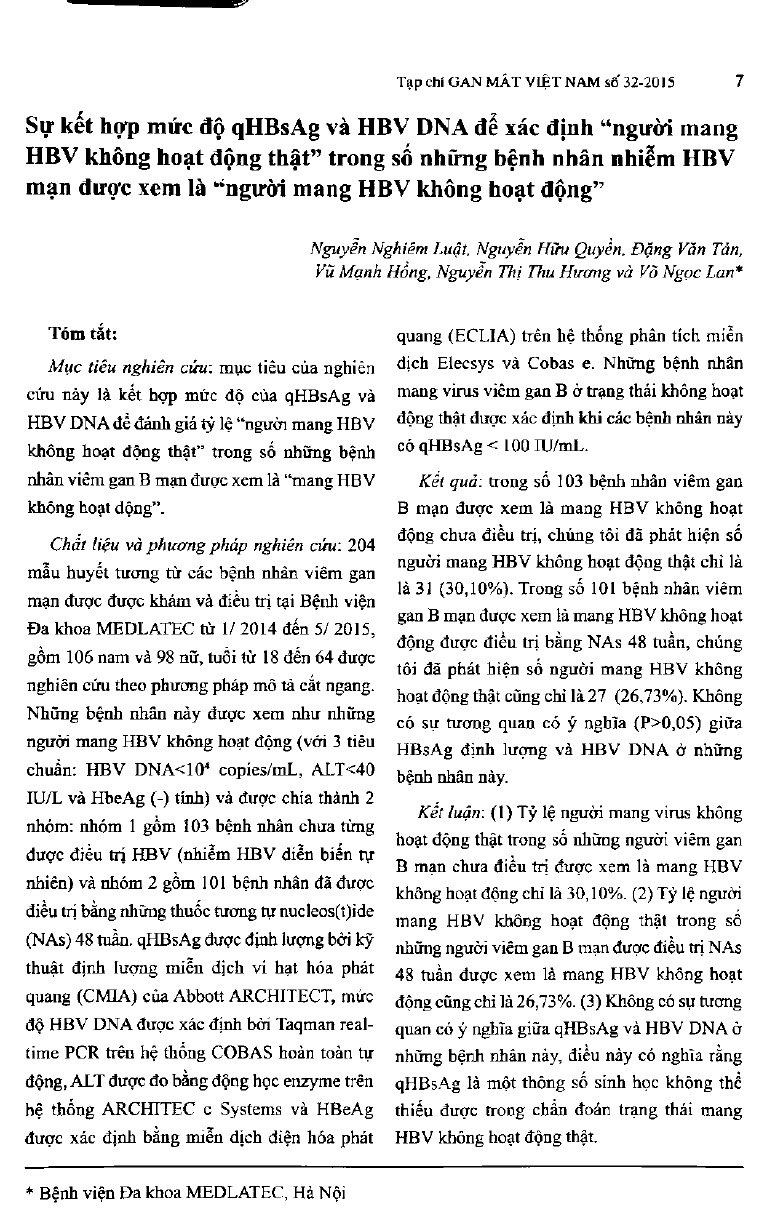
Objectives: the goal of this study is to combine of qHBsAg and HBV DNA levels for determining the true inactive carriers among the chronic HBV infected patients considered as inactive carriers. Materials and methods: 204 plasma samples from the chronic HBV infected patients who were examined and treated in MEDLATEC General Hospital from 2014 Jan-2014 May, consisting 106 males and 98 females, with ages of 18 to 64 years, were included in this cross-sectional study. They were considered as inactive carriers (with 3 criteria: HBV DNA 10 exponent 4 copies/mL, ALT 40 IU/L, and HBeAg negative), and were classified into 2 groups: group 1 consisting 103 treatment-naive patients (natural history) and group 2 consisting 101 patients were treated with nucleotide analogues (NAs) for 48 weeks. Plasma HBsAg were quantified by a chemiluminescent microparticle immunoassay (CMIA) of the Abbott ARCHI-TECT, HBV DNA load was determined by Taq-man real-time PCR using the fully automated COBAS, ALT activities were measured by enzyme kinetic on ARCHITECT c Systems, and HBeAg states were detemined by electrochimilu-minescence (ECLIA) on Elecsys and Cobas e immunoassay analyzer. True inactive carriers were determined when these patients had qHBsAg 100 IU/mL. Results: among 103 treatment-naive patients considered as inactive carriers, only 31 (30.10 percent) true inactive carriers were detected. Among 101 patients who were treated with nucleotide analogues for 48 weeks, considered as inactive carriers, only 27 (26.73 percent) true inactive carriers were detected. No significant correlations (P0.05) between levels of qHBsAg and HBV DNA in these patients. Conclusions: (1) The rate of true inactive carriers among treatment-naive patients considered as inactive carriers was only 30.10 percent. (2) The rate of true inactive carriers among patients treated with nucleotide analogues for 48 weeks who considered as inactive carriers, was only 26.73 percent. (3) There were no significant correlations between qHBsAg and HBV DNA in these patients; this means that qHBsAg was an indispensable biological parameter to diagnose the true inactive virus carrier state.
- Đăng nhập để gửi ý kiến
